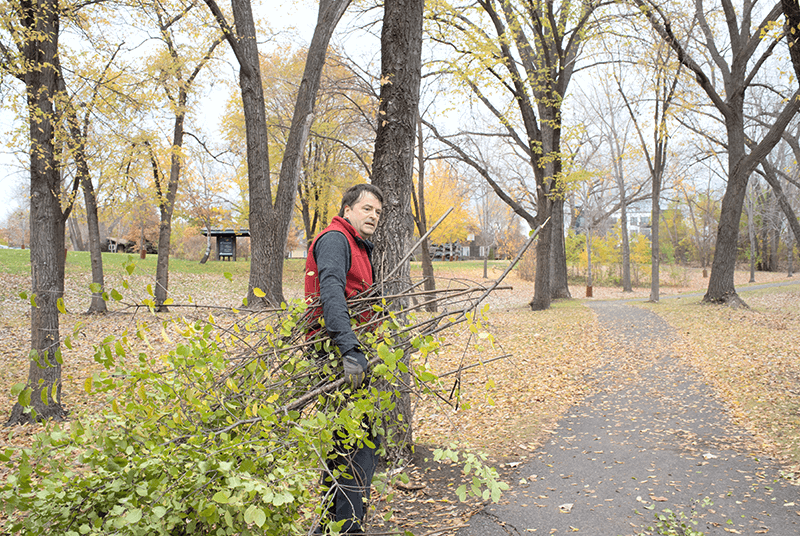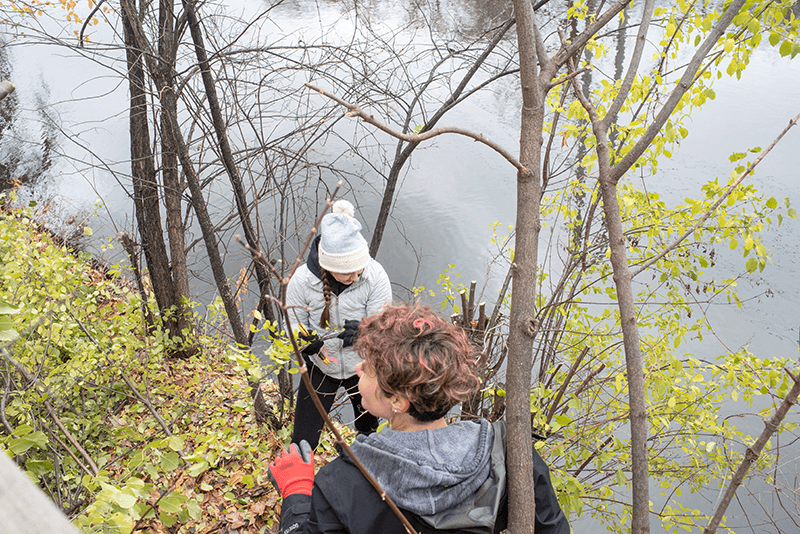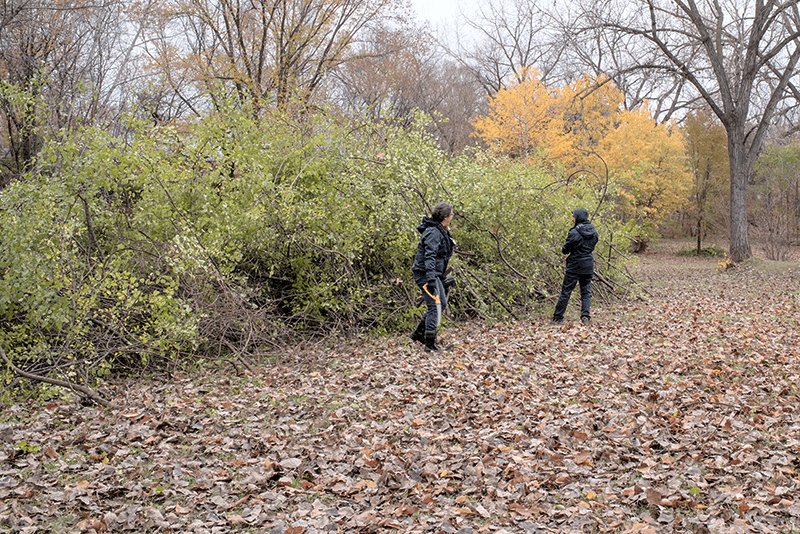If you walk down to the riverbank of B.F. Nelson Park, you’ll see plastic bags over some of the plant stems. They’re “buckthorn baggies,” and they’re not for protection, said Alex Roth, an ecologist with the nonprofit Friends of the Mississippi River (FMR).
Rather, the baggies are an invasive species control measure that will remain on the stumps of the plants for an entire year, a non-chemical method of ensuring that the plants won’t sprout in the spring. The measure keeps the roots intact for a while to keep the soil from eroding while the native shrubs and wildflowers planned for the site have a chance to take hold. Eventually the buckthorn roots will naturally decay.
“Buckthorn can grow so densely that it crowds out native plant species, causes erosion into the river, harms wildlife, and blocks views. Removing the plants makes way for native vegetation that will provide better habitat for pollinators and other wildlife, better stabilize soil on the riverbanks, and open up the shoreline to better views of the river,” explained Roth.
Roth, FMR volunteer coordinator Sophie Downey, and 19 volunteers spent the morning of Saturday, Nov.13, wielding saws, cutting the buckthorn down to ground level, securing the bags, and dragging branches to a large brush pile that will be hauled away and disposed of by the Minneapolis Parks and Recreation Board.
It was FMR’s last volunteer event of the season, but the organization is already looking forward to their spring slate of events and their Earth Day kickoff event. People interested in learning more and getting involved in FMR’s public events can sign up for their Mississippi Messages newsletter at fmr.org/sign-up.
Below: Bill Lynch of the Lowry Hill neighborhood hauls a bunch of branches to the brush pile. Volunteers cut the buckthorn down to stumps of branches, and then covered the branches with bags that will prevent the plant from growing in the spring. The intact buckthorn roots will eventually decay but first will protect against erosion as native plants planned for the site take hold. (Photos by Karen Kraco)


